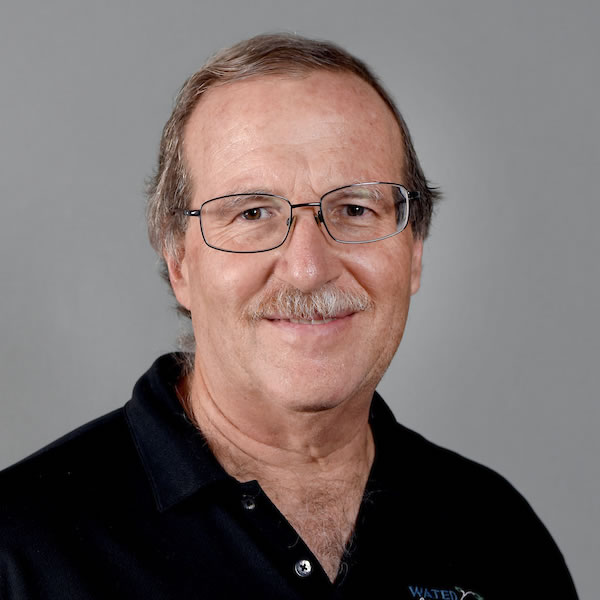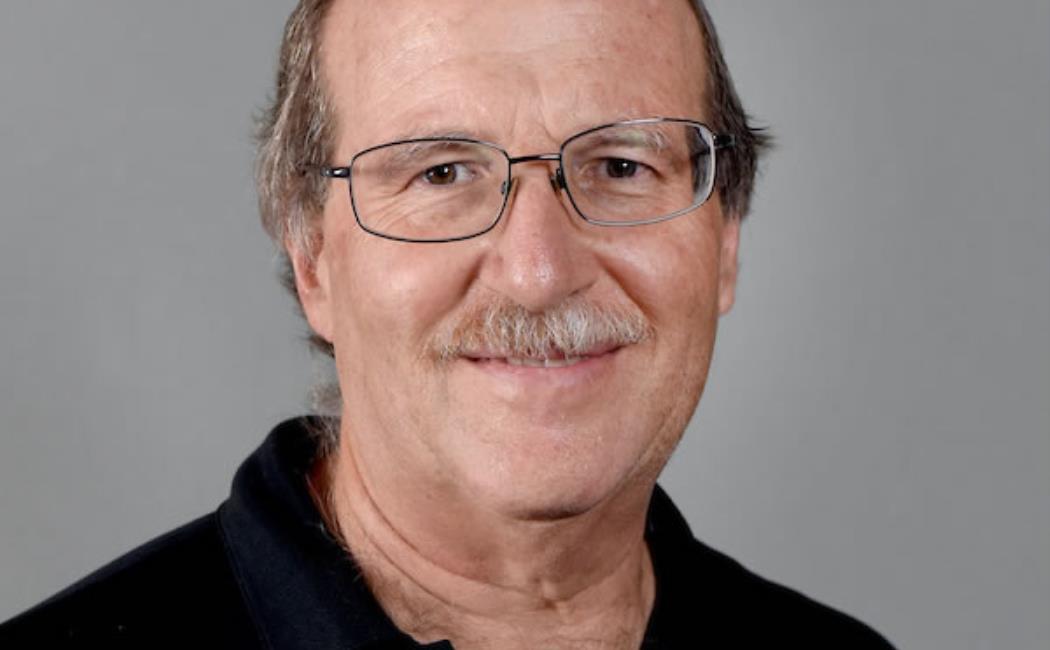ENSE Seminar Series
Sunday, November 24, 2019, 4:00 p.m. – 5:00 p.m.
Auditorium between Bldg. 4&5, Level 0, Room 0215
Presented by

Prof. Peter Fox
Professor and Graduate Program Chair, Arizona State University
Limitations of Indirect Potables Reuse and Expansion into New Regions
Abstract
Indirect potable reuse is becoming an integral part of more water supplies as the mechanisms behind the technology have become more clearly understood. An indirect potable reuse system consists of above groundwater reclamation, groundwater recharge with the reclaimed water, recovery of the reclaimed water through groundwater wells and post-treatment. During groundwater recharge, natural processes are driven by microbial transformations that remove the majority of organics. In addition, the natural processes decrease the dissolved organic concentrations to acceptable levels and transform the organic carbon such that it cannot be distinguished from natural organic matter in terms of structure and function. (Drewes et al., 2006).
As the implementation of indirect potable reuse systems expands, two major concerns have continued to require research and demonstration projects before full-scale implementation. When indirect potable reuse is being considered in a new region with soils that are not alluvial, there is often no history of projects in the region. One example is the LOTT Alliance which is located near Seattle, Washington where the soils are composed of glacial tills. The research associated with the initial field research study has been ongoing for over four years and is planned to be completed at the end of 2019. The field study includes 28 monitoring wells along with three sets of nested lysimeters. LOTT considers the extensive study necessary to demonstrate the technology before the expansion of the project. Results have been promising with performance comparable to other indirect potable reuse systems that have been studied extensively. Persistent trace organic compounds have been observed at monitoring wells including the presence of the artificial sweetener sucralose at concentrations above 1,000 ng/l.
The presence of persistent trace organic compounds has led to the consideration of alternative treatment processes prior to groundwater recharge. Reverse osmosis will remove almost all trace organics, but brine disposal is often a limiting factor. One promising alternative is ozonation prior to groundwater recharge. Ozonation is known to increase the biodegradability of organic matter and oxidize trace organic compounds. Currently, the TOHO district in Florida is considering the use of ozonation prior to rapid infiltration basins. TOHO has been using the rapid infiltration basins for non-potable purposes and plans to integrate them into an indirect potable reuse system in the future.
A pilot-scale study has been initiated using soil columns prior to a field demonstration study. The issue of uncertainty regarding groundwater recharge in different types of porous media was theoretically addressed in a research study that investigated the relationship between travel time and surface area (Fox and Makam, 2009). Microbial transformations that occur during flow through porous media are analogous to the same constraints as a biological fixed-media filter. Slow sand filters are an example of a treatment system that relies on microbial transformations to reduce the concentration of dissolved organic matter. Two of the key design variables for biological filters are surface area and residence time. Regulations for indirect potable reuse systems often include a minimum travel time that is based on criteria for virus survival. Minimum travel time requirements which range for 2-6 months are also logical when one considers the microbial transformations during sub-surface transport. A relationship between travel time and surface area for flow through porous media was developed by Fox and Makam (2009). By normalizing the surface area to travel time, it was determined that natural systems containing mixtures of clay, silt, sand and gravel had a limited range of surface areas for a specific travel time. It was found that if a minimum travel time was specified, the surface area contact would vary be less than a factor of 2.5 for typical sub-surface conditions where flow is through a porous media. The distance can vary significantly as a high conductivity media such as is present in the LOTT Alliance study will require much great distances as compared to systems with low conductivity media such as Mesa, Arizona (Fox et al., 2001). The fact that natural systems have a relatively narrow range of surface areas for a specified travel time is one possible reason that groundwater recharge systems provide similar results even when they are located on different continents. Essentially, specifying a minimum travel time also specifies the surface area necessary for consistent microbial transformations to occur similar to the design of a biological filter.
The final phase of the LOTT Alliance study will include a field-scale tracer test that will help verify travel times which are currently calculated using a hydrogeological model. Ozonation is currently being considered as a treatment method to reduce the presence of trace organics with particular emphasis on Contaminants of Emerging Concern (CECs). Ozonation was originally evaluated as a treatment process prior to groundwater recharge as a method to reduce dissolved organic carbon (DOC) concentrations. Drewes and Jekel (1998) found that ozonation would reduce DOC concentrations in studies conducted in Berlin, Germany. A similar study performed in Tucson found that ozonation would increase the kinetics of dissolved organic carbon transformation, but there was no effect on the final DOC concentration. The difference in these studies was determined to be the levels of natural organic matter in the source waters. Both cities used groundwater and Berlin groundwater had DOC concentrations greater than 5 mg/l while Tucson groundwater was less than 1 mg/l (Drewes and Fox, 2000). A more recent study conducted by Trussel et al., (2015) evaluated the efficacy of ozonation prior to groundwater recharge on the removal of CECs. Ozonation was effective at removing carbamezapine and primodone which are well known to be persistent CECs in indirect potable reuse systems. However, ozone was not effective at reducing the concentrations of sucralose and the fire retardant TCEP. The results of this ozonation study were promising as other benefits included a reduction in DOC concentrations in the product water and the ozonation by-product bromate was removed during simulated groundwater recharge. The TOHO district in Florida has therefore initiated a similar study to determine the efficacy of ozonation prior to their rapid infiltration basins. The TOHO district is looking to expand its potable water supply without importing a new source of water and indirect potable reuse is the most cost-effective alternative water supply. As the knowledge base for indirect potable reuse continues to grow, more water suppliers outside of arid regions are considering indirect potable reuse relying on the natural attenuation processes during groundwater recharge. Travel time criteria based on virus removal simultaneously provide sufficient time and surface area for effective biological filtration during groundwater recharge. This fact can explain why systems in different regions have similar performance. The presence of persistence CECs and/or salts are a limitation of indirect potable reuse systems. The Orange County Water District's Groundwater Replenishment program uses reverse osmosis before groundwater recharge to overcome this limitation. The Aurora, CO Prairie Waters indirect potable reuse system uses extensive post-treatment to overcome these limitations. Ozonation provides a simpler approach to overcoming the problem with CECs and should be effective for systems that do not have issues with salinity like the TOHO district in Florida.
References
1. Drewes, J. E. & Jekel, M. (1998). Behavior of DOC and AOX using advanced treated wastewater for groundwater recharge. Water Research 32, 10, 3125-3133.
2. Drewes, J. E. and P. Fox. (2000). Impact of Drinking Water Sources on Reclaimed Water Quality in Water Reuse Systems, Water Environment Research, 72, 3, 353-362.
3. Drewes, J. E., Quanrud, D., Amy, G. & Westerhoff, P. (2006). Character of Organic Matter in Soil-Aquifer Treatment Systems. J. Environmental Engineering 11, 1447-1458.
4. Fox, P. , Naranaswamy, K. and J. E. Drewes. (2001) "Water Quality Transformations during Soil Aquifer Treatment at the Mesa Northwest Water Reclamation Plant, USA,", Water Science and Technology, 43, 10, 343-350.
5. Makam, R. and P. Fox (2009), Surface Area and Travel Time Relationships in Aquifer Treatment Systems, Water Environment Research 81:11, 2337-2443.
6. Trussel, S., Tiwari, S. and F. Gerringer (2015). Enhancing the Soil Aquifer Treatment Process for Potable Reuse, Final Report for the WateReuse Research Foundation, Project 12-12.
Bio
Dr. Peter Fox is presently employed as a Professor of Environmental Engineering at Arizona State University for 30 years and he currently serves as the Graduate Program Chair of the School of Sustainable Engineering and the Built Environment for 30 years. He was the director of the National Center for Sustainable Water Supply for 8 years where he leads efforts to revise Indirect Potable Reuse guidelines and regulations. His professional interests are primarily in water reuse, biological treatment processes and combined biological/adsorptive systems. He has focused his work on natural treatment systems, groundwater recharge and biofiltration. He is a four-time recipient of the Quentin Mees Research Award from the AZWater Association. Dr. Fox was awarded the Fair Distinguished Engineering Educator Award from the Water Environment Federation in 2016.
Dr. Fox served on the National Academy of Science ad-hoc committee that published the National Research Council report entitled “Prospects for Managed Underground Storage of Recoverable Water” in 2008. Dr. Fox also authored the groundwater recharge chapter in the Metcalf and Eddy textbook on water reuse. In addition, Dr. Fox was an executive committee member for the development of the national roadmap for desalination and water purification. This was a congressionally mandated effort between the United States Bureau of Reclamation and Sandia National Laboratories.



